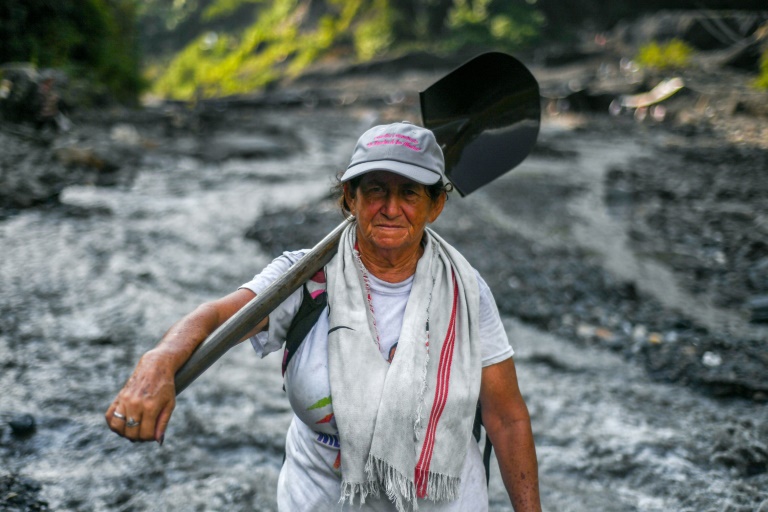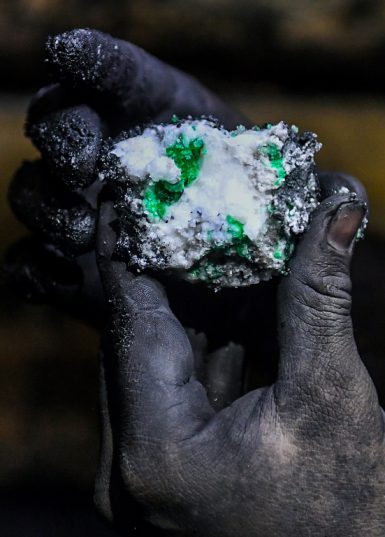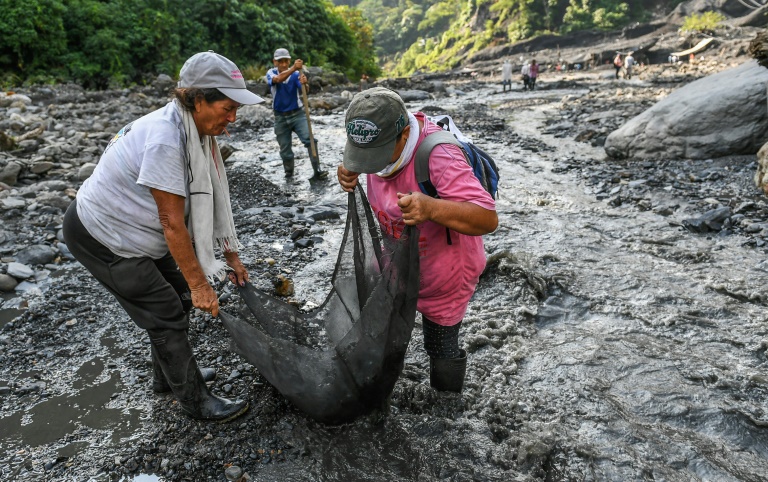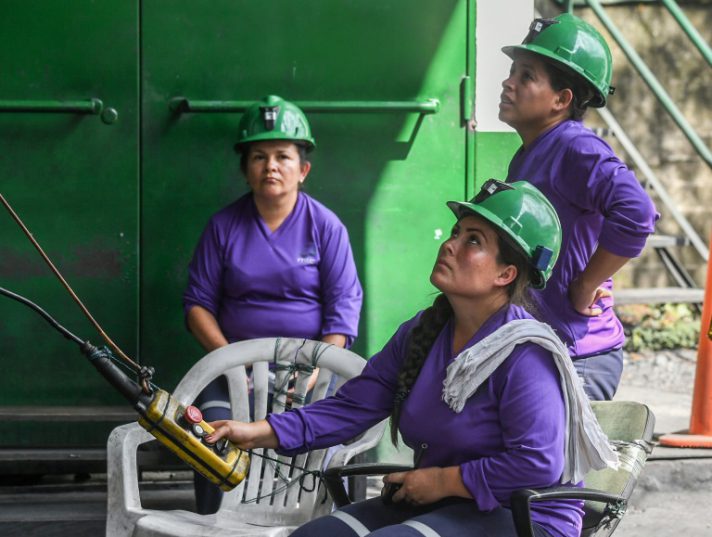Manie Libbok to ‘leave’ Stormers to play in Japan — report
Canon and others like her have spent their lives as “guaqueras,” or fortune hunters, sifting stray gems from the shale gouged from rock and spewed out as waste from the mines in the lush mountains of northern Colombia.
“The idea of getting an emerald brought me here and I’ve stayed in the hope that the Baby Jesus will put one on my shovel,” said the 63-year-old Canon, her face chiseled by the sun.
Canon arrived at the end of the 1970s in the Andean town of Muzo, known as the emerald capital of the world.
The women who came here, some running from violent relationships, could not work in the tunnels alongside the men because of the macho prejudice that they brought bad luck. The country’s laws additionally prevented women from going down the mines.
“It has always been said in this region that the emeralds hid when they would enter,” says Maria Luisa Durance, a 39-year-old social worker at Mining Texas Colombia (MTC), a leading company in the sector with 800 employees.

Emerald seeker Blanca Biutrago, a 52-year-old mother of five, hunts for the green gems to support her family
Every day for more than three decades, Canon has put on her rubber boots and joined dozens of other fortune hunters sifting through the mine waste in the fast-flowing Las Animas river.
Global fascination for emeralds dates back to pre-Columbian civilizations.
Ships from the Spanish conquest exported the precious stones as far away as Persia, and in the 20th century the mountain was practically disfigured by explosives used to shift walls of rock.
Colombia now produces around two thirds of the world’s emeralds, most of them from the Muzo area, around 150 kilometers (100 miles) north of the capital Bogota.
– Green fever –
The modernized mines now produce less waste shale. But even so, men and women of all ages still cling to their shovels and sieves, seeking their fortune in the tons of mine tailings thrown into the river.

Sometimes guaqueros find sparkling green stones in a wash of shale, as a geologist shows here
“This is a fever,” admits Canon, who has raised her three children with the proceeds from the job.
From time to time, someone will strike it lucky, finding sparkling green stones in a wash of shale, but for the most part, the guaqueros — men and women alike — live in debt to local merchants.
“They lend us money and when we find a stone, they take it,” said Blanca Buitrago. “For a long time now, I haven’t found anything.”
But sometimes, Buitrago says, she can find gems that will bring in between 65 and 165 dollars, “no more.”
Buitrago, a 52-year-old mother of five, arrived in Muzo to seek her fortune after being forced out of her home by one of Colombia’s dozens of armed groups in 2006.
In 2015, women were finally allowed to enter the mines when the sexist law that prevented them was annulled.
But like Canon and many other guaqueras, Buitrago is now too old to benefit from the law and get a formal job at the mines.
However, Saida Canizales, 40, was able to take advantage of the change and she is currently the only woman among 18 MTC security supervisors.
“Obviously women joining the mines has been a challenge… but I think I’ve already taken it forward,” says Canizales, an expert in electronic surveillance, who tripled the 600-dollar salary she was getting in Bogota.
Wearing a black helmet that barely covered her blonde braids, Canizales headed deep into the mine to monitor gems being extracted from the rock.

A men’s superstition that considered women like Blanca Biutrago (L) and Rosalba Canon as bad luck kept them marginalized for a long time from the mines of Colombia
Later — and 140 meters (460 feet) deeper — a miner using a jackhammer broke through the rock face as Canizales watched.
A powdery white vein of calcite appeared, and a smudge of green dust — a tell-tale sign of a gem.
In the shifting beams of head torches, a geologist delicately chipped at the rock with his pick until a few emerald stones tumbled into his palm. He slipped the stones into a bag that Canizales sealed, before making her way back up to the surface.
– ‘Hardworking, honest, proud’ –
Luis Miguel Ayala said he is unfazed by having a woman supervisor in what until recently has exclusively been a man’s world.
“Anyone with the ability to use the tools can do this job,” said the 23-year-old, wiping the sweat from his eyes as temperatures in the shaft reached 35 degrees Celsius (95 degrees Fahrenheit) with 90 percent humidity.
Hiring women has been “a very successful policy,” MTC chairman Charles Burgess told AFP. The women “are very hardworking, honest and proud of their work.”

Until recently, women in search of evasive emeralds had no choice but to dig through leftover grit debris
“Although obviously there are jobs that are not suitable for them because the work is sometimes very hard physically,” said the 62-year old former US diplomat, who is married to a Colombian.
But introducing women in the shafts was not easy. When the huge elevator that takes them down from the surface was operated for the first time by a woman, no miner would take the risk of going with her. An engineer finally stepped forward to set an example.
Two years later, some 15 women known as “malacateras” handle these machines, most of them single mothers or widows who left violent homes.
Adriana Perez escaped a poverty ridden childhood to get here. The day she could go down the mine, she said “my life changed.”
Her $600 salary is more than twice the minimum wage. For her, the mine allows her to dream of a better future for her two children.
Download our app